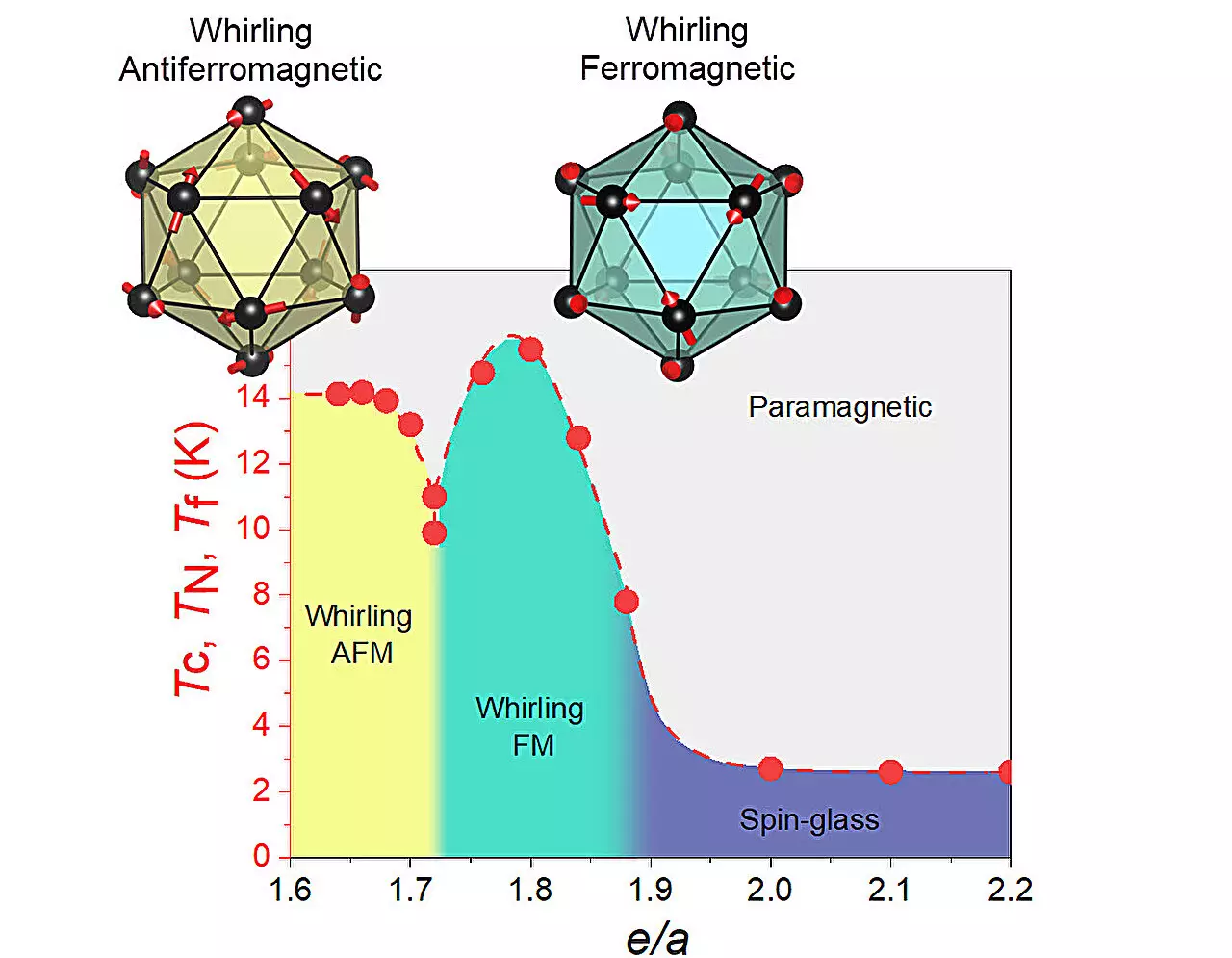Quasicrystals, a type of intermetallic material, have captured the attention of researchers in the field of condensed matter physics. These unique materials possess non-repeating ordered patterns of atoms, distinguishing them from normal crystals. Quasicrystals, particularly the Tsai-type icosahedral quasicrystal (iQC) and their cubic approximant crystals (ACs), exhibit fascinating properties such as long-range ferromagnetic (FM) and anti-ferromagnetic (AFM) orders. Additionally, they display unconventional quantum critical phenomena, making them highly desirable for practical applications in spintronics and magnetic refrigeration.
Despite the immense potential of quasicrystals, their magnetic phase diagram remains largely unexplored. To shed light on this area, a team of researchers from Tokyo University of Science and Tohoku University embarked on a study led by Professor Ryuji Tamura. Their objective was to conduct magnetization and powder neutron diffraction (PND) experiments on the non-Heisenberg Tsai-type 1/1 gold-gallium-terbium AC.
Through a series of experiments, the research team successfully developed the first comprehensive magnetic phase diagram of the non-Heisenberg Tsai-type AC. Their investigation covered a wide range of electron-per-atom (e/a) ratios, a crucial parameter for understanding the fundamental nature of quasicrystals. The researchers utilized powder neutron diffraction (PND) measurements, which revealed the presence of a noncoplanar whirling AFM order at an e/a ratio of 1.72 and a noncoplanar whirling FM order at an e/a ratio of 1.80.
In analyzing the relative orientation of magnetic moments between nearest-neighbor and next-nearest neighbor sites, the research team uncovered the ferromagnetic and anti-ferromagnetic phase selection rule of magnetic interactions. This insight contributes to the understanding of the intricate interplay between magnetic interactions in non-Heisenberg Tsai-type ACs. Furthermore, the findings pave the way for future investigations into the intriguing properties of non-Heisenberg ACs and yet-to-be-discovered non-Heisenberg iQCs.
Professor Tamura emphasizes that these findings open up new avenues of research in condensed matter physics. The breakthrough in unraveling the magnetic phase diagram of quasicrystals not only expands our understanding of these unique materials but also propels the field forward into uncharted territories. This advancement has the potential to revolutionize the development of advanced electronic devices and next-generation refrigeration technologies.
The study conducted by Professor Ryuji Tamura and his team sheds light on the magnetic phase diagram of quasicrystals, specifically the non-Heisenberg Tsai-type AC. Through comprehensive experiments and analysis, the researchers have paved the way for future investigations in the field of condensed matter physics. These findings bring us closer to harnessing the unique properties of quasicrystals for practical applications, including magnetic storage devices and innovative refrigeration technologies. The implications of this breakthrough extend beyond the realm of quasicrystals, offering valuable insights into the fundamental nature of complex materials and their potential in advancing various scientific disciplines.


Leave a Reply